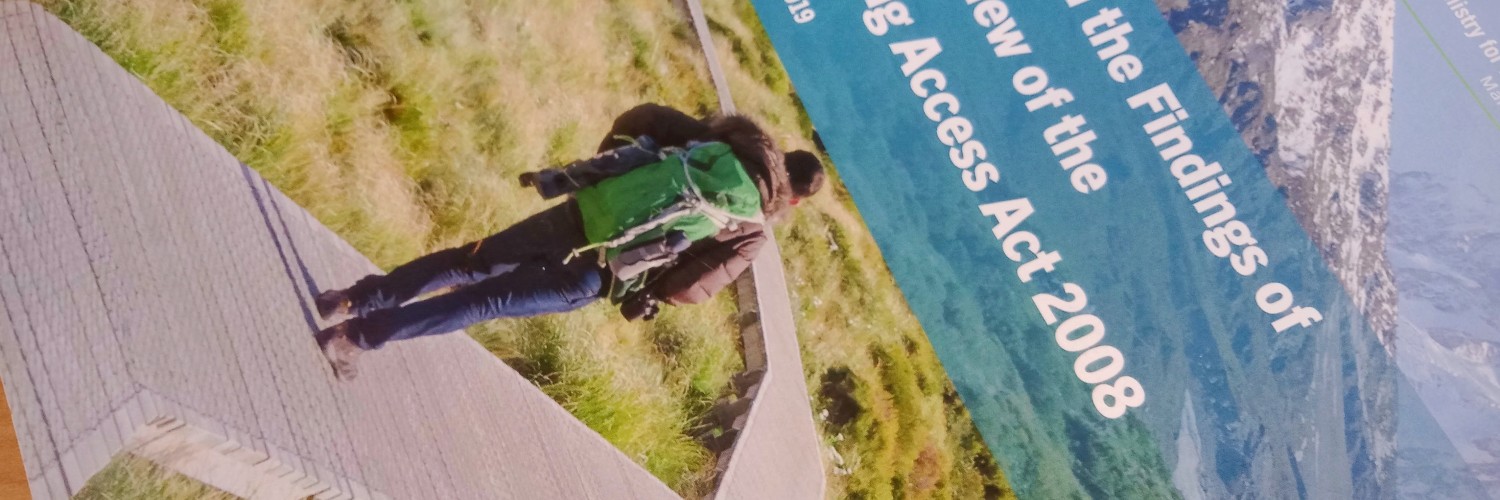Foreword
The Walking Access Act was enacted in 2008 with the purpose of improving walking access to the outdoors in New Zealand. The motivation for the Act was that enjoyment of the outdoors is of benefit to all New Zealanders. At the same time, the Act established a small New Zealand Walking Access Commission to promote access and help negotiate access arrangements.
The development of the legislation between 2006 and 2008, and its passage through Parliament engendered strong, at times passionate, debate. Some were suspicious the Act would result in an assault on property rights. Others suspected it would be insufficient to enhance more sweeping public access across private land. The politics of that debate resulted in a provision being inserted in the legislation (section 80) requiring a review after 10 years to assess how the Act and the Commission were performing after 10 years. Hence this review.
The Ministry for Primary Industries (MPI) led the review, appointing a panel of three to provide external perspectives. The panel members have participated in the public meetings and one-on-one discussions with a wide range of stakeholders. We have met with the board of the Commission and with the Commission’s staff. In addition, we have assisted MPI staff with their public feedback paper, and with this final report.
Our participation in the review has led us to two primary conclusions. These sit above a range of other significant recommendations for improvements to the Act (and other Acts), to the work of the Commission and for some other agencies whose work affects walking access.
Our first primary conclusion is that the Act has been (and continues to be) effective and of public benefit. We support its continuance.
Our second primary conclusion is that the Commission’s work is valued by most stakeholders, acknowledging, however, that engagement with Māori has not been extensive. Stakeholders often hold very different views from each other on other issues, but collectively agree on the Commission’s value. The two most important things that are valued are:
- the network of regional field advisors working to resolve walking access issues through direct discussion and negotiation; and,
- the outdoor access mapping system (WAMS), and its easy online availability.
As a group, we wholeheartedly support the recommendations of this review, with one exception explained below. There are several recommendations which we would like to highlight, however. These are:
- the Act should include skills criteria for members of the board;
- the Commission must produce and publish the priorities for its work, on at least a five yearly basis;
- the Commission should partner with Māori across the breadth of its work, to better align the application of the Act with the aspirations of Māori;
- other government agencies should be required to work with the Commission (rather than passing work on to the Commission or leaving it to the Commission to approach them). These agencies are Land Information New Zealand, the Overseas Investment Office, the Department of Conservation, the Ministry of Business, Innovation and Employment (through its tourism role) and Tourism New Zealand;
- the Commission’s funding is miniscule. We support it being increased, for two purposes in particular:
- continuously improving the outdoor access mapping system (WAMS); and
- greater support for the system of regional field advisors, at a minimum so that they can increase the hours they are paid for (at present they work far beyond what they are paid for).
Recommendation 26 finds that the current range of between five and eight board members should remain. This is the one review recommendation on which we hold a different view to the Review. A board of eight is very large for such a small entity. We feel it could operate quite effectively with a board of five provided the right mix of skills are held by appointees. Our view is that the Act should be amended so that the number of Commission board members is five only.
Finally, we would like to thank all those who have participated in this review. We have been impressed with the overall positivity that they brought to the process. And especially we would like to thank the MPI officials for their hard work in bringing all the work together in this final report.
Dr. Hugh Logan, Sandra Faulkner, Leith Comer QSO

